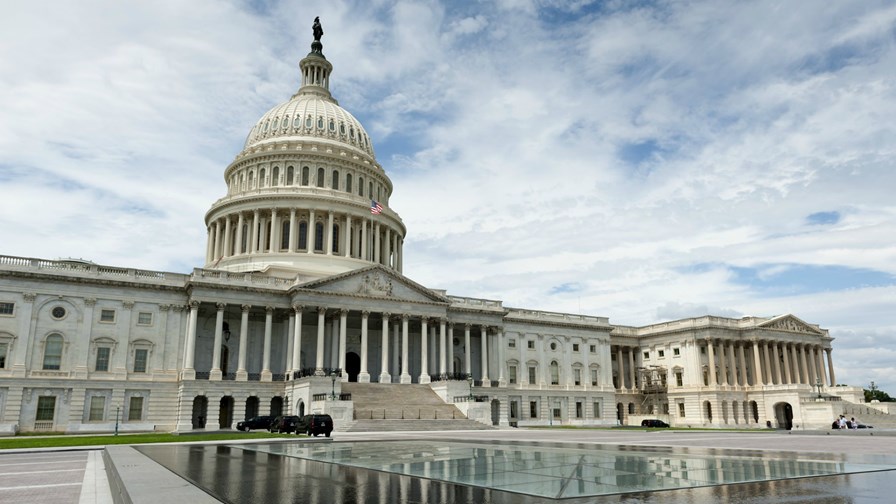
via Flickr © Jeremy Buckingham MLC (CC BY 2.0)
The House of Representatives has passed an infrastructure Act designed, amonst a range of things, to expand broadband access in the US. The bill’s supporters claim that the impact of the pandemic and its associated lockdown has highlighted the need for expanded broadband access and other changes. As things currently stand, however, the Moving Forward Act is highly unlikely to progress through the Senate and get presidential approval unscathed. Only if a radically different political settlement emerges in Washington later this year will the bill, or something fairly close to it, have a chance of clearing the legislative process.
Here’s a succinct but comprehensive summary of the bill in its current state released by the Communications Workers of America)
The bill, the Moving Forward Act(H.R. 2), contains the following:
$80 billion to deploy broadband to unserved areas, creating and preserving good jobs. The bill provides $80 billion to deploy broadband infrastructure to unserved and underserved communities. Of the $80 billion, $60 billion will be appropriated for a national competitive reverse auction to fund broadband deployment in unserved areas (areas with service below 25/25 Mbps) and areas with low-tier service (areas with service between 25/25 and 100/100 Mbps). The remaining $20 billion will be distributed among states by population for statewide competitive reverse auctions for broadband deployment to unserved areas and anchor institutions, like schools and libraries. Funded projects must be completed in four years. In states with no un- or underserved areas, funding may be used for broadband deployment in areas with mid-tier service.
Strong protections for workers’ rights and union organizing. The bill prevents recipients of the deployment funding from interfering with labor organizing by requiring recipients to remain neutral in workers’ organizing efforts, requires first-contract bargaining and binding arbitration) and prohibits subcontracting for the purposes of circumventing a collective bargaining agreement. In addition, funding recipients must pay their workers prevailing wages.
New support to make broadband service more affordable. The bill establishes a broadband benefit program that entitles households with a member who qualifies for Lifeline, free/reduced school lunch, or is recently unemployed to receive a $50 benefit to put toward the monthly price of Internet service. Internet service providers would be required to provide eligible households service at a price reduced by an amount up to the benefit, and those providers can seek a reimbursement from the FCC. The bill appropriates $9 billion for this support for low-income households.
Connect students and close the Homework Gap. The bill establishes a grant program at the FCC for schools and libraries to fund connectivity for students and teachers in the digital classroom. The program may also be used to fund wired and wireless broadband connections at students’ homes and provide connected devices such as laptops and tablets for students and teachers. The program also supports mobile hotspot-lending by schools and libraries. The bill appropriates $5 billion for this new program for students.
Establish the Office of Internet Connectivity and Growth. The bill directs the National Telecommunications and Information Administration (NTIA) to establish the Office of Internet Connectivity and Growth. This new office will conduct outreach to communities in need of better access to, or adoption of, Internet service, through organizing regional workshops, training, and publications to provide guidance and insights for these communities. It will be responsible for tracking all federal money being used for both the construction and use of broadband infrastructure. The new Office will also coordinate with other Federal agencies to conduct a study on the extent to which affordability is a contributing factor to the lack of broadband adoption and on ways to improve Federal subsidies to households to make broadband affordable.
Two new grant programs to help achieve digital equity.The bill establishes within the new Office of Internet Connectivity and Growth and provides more than $1 billion for two grant programs to help close the digital divide. The first program is the State Digital Equity Capacity program, an annual grant program for states to create and implement comprehensive digital equity plans to help close gaps in broadband adoption and skills. Grants must be used within a five-year period to implement the state’s digital equity plan and to pursue digital inclusion activities consistent with that plan. The bill appropriates $60 million for grants to states to develop their digital equity plans and $625 million for grants to implement these plans.
The second program is the Digital Equity Competitive Grant Program will award grants to local entities, tribal governments, Alaska Native entities, Native Hawaiian organizations, non-profits, anchor institutions, educational entities, and workforce development programs for digital inclusion activities. The bill appropriates $625 million to carry out this grant program.
Email Newsletters
Sign up to receive TelecomTV's top news and videos, plus exclusive subscriber-only content direct to your inbox.




